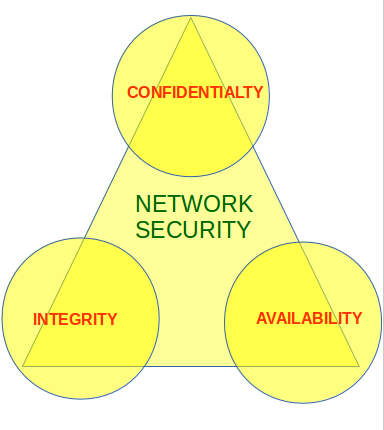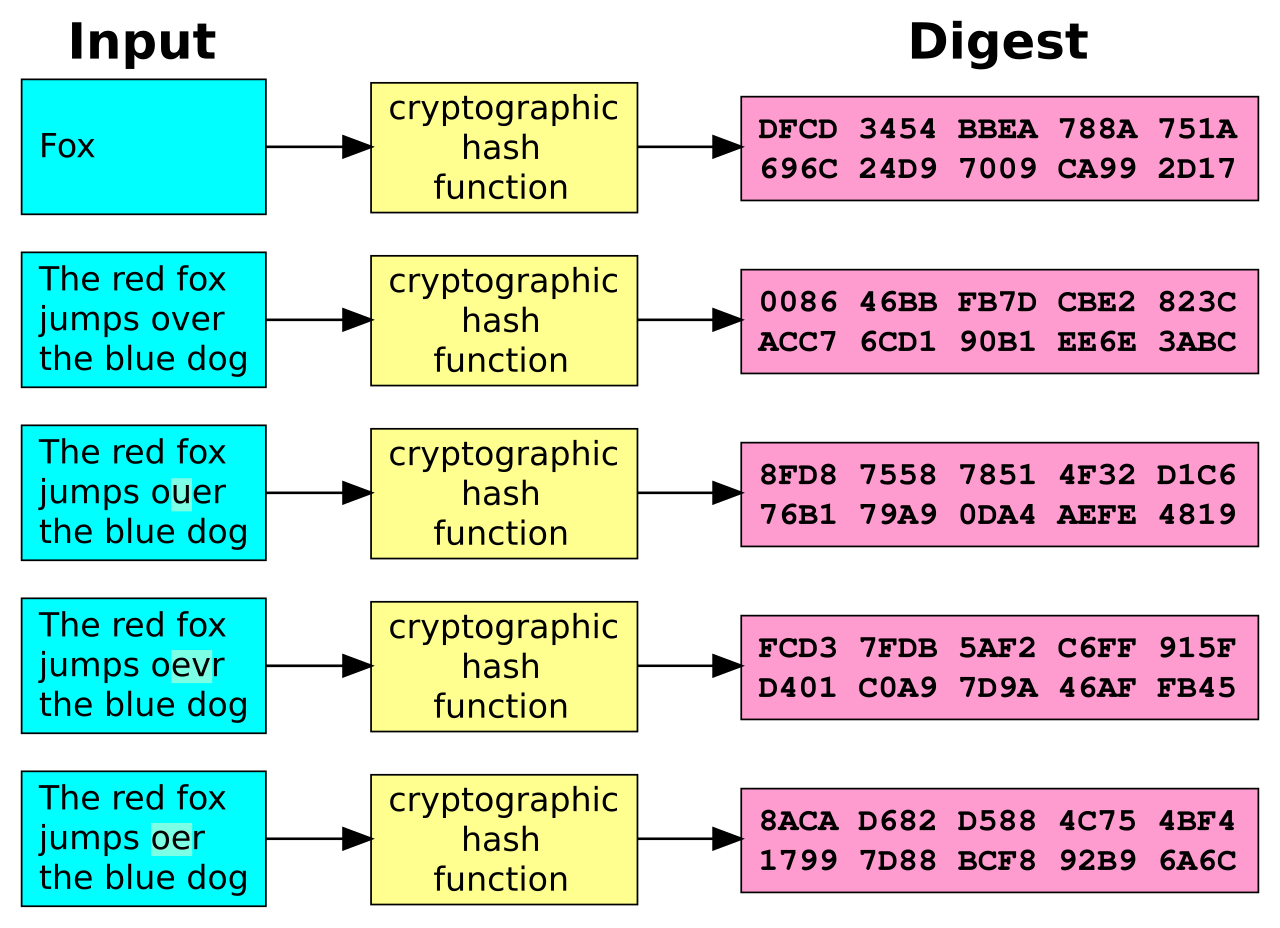Confidentiality, integrity and availability, also known as the CIA triad, is a model designed to guide policies for information security within an organization. The model is also sometimes referred to as the AIC triad (availability, integrity and confidentiality) to avoid confusion with the Central Intelligence Agency. Although elements of the triad are three of the most foundational and crucial cyber-security needs, experts believe the CIA triad needs an upgrade to stay effective.
In this context, confidentiality is a set of rules that limits access to information, integrity is the assurance that the information is trustworthy and accurate, and availability is a guarantee of reliable access to the information by authorized people.
Confidentiality, integrity, availability
The following is a breakdown of the three key concepts that form the CIA triad:
- Confidentiality is roughly equivalent to Confidentiality measures are designed to prevent sensitive information from unauthorized access attempts. It is common for data to be categorized according to the amount and type of damage that could be done if it fell into the wrong hands. More or less stringent measures can then be implemented according to those categories.
- Integrity involves maintaining the consistency, accuracy and trustworthiness of data over its entire life-cycle. Data must not be changed in transit, and steps must be taken to ensure data cannot be altered by unauthorized people (for example, in a breach of confidentiality).
- Availability means information should be consistently and readily accessible for authorized parties. This involves properly maintaining hardware and technical infrastructure and systems that hold and display the information.
Why the CIA triad is important
With each letter representing a foundational principle in cyber-security, the importance of the CIA triad security model speaks for itself. Confidentiality, integrity and availability together are considered the three most important concepts within information security.
Considering these three principles together within the framework of the "triad" can help guide the development of security policies for organizations. When evaluating needs and use cases for potential new products and technologies, the triad helps organizations ask focused questions about how value is being provided in those three key areas.
Thinking of the CIA triad's three concepts together as an interconnected system, rather than as independent concepts, can help organizations understand the relationships between the three.
Examples of the CIA triad
Here are examples of the various management practices and technologies that comprise the CIA triad. While many CIA triad cyber-security strategies implement these technologies and practices, this list is by no means exhaustive.
Confidentiality
Sometimes safeguarding data confidentiality involves special training for those privy to sensitive documents. Training can help familiarize authorized people with risk factors and how to guard against them. Further aspects of training may include strong passwords and password-related best practices and information about social engineering methods to prevent users from bending data-handling rules with good intentions and potentially disastrous results.
A good example of methods used to ensure confidentiality is requiring an account number or routing number when banking online. Data encryption is another common method of ensuring confidentiality. User IDs and passwords constitute a standard procedure; two-factor authentication (2FA) is becoming the norm. Other options include bio-metric verification and security tokens, key fobs or soft tokens. In addition, users can take precautions to minimize the number of places where information appears and the number of times it is actually transmitted to complete a required transaction. Extra measures might be taken in the case of extremely sensitive documents, such as storing only on air-gapped computers, disconnected storage devices or, for highly sensitive information, in hard-copy form only.
Integrity
These measures include file permissions and user access controls. Version control may be used to prevent erroneous changes or accidental deletion by authorized users from becoming a problem. In addition, organizations must put in some means to detect any changes in data that might occur as a result of non-human-caused events such as an electromagnetic pulse (EMP) or server crash.
Data might include checksum, even cryptographic checksum, for verification of integrity. Backups or redundancies must be available to restore the affected data to its correct state. Furthermore, digital signatures can be used to provide effective non-repudiation measures, meaning evidence of logins, messages sent, electronic document viewing and sending cannot be denied.
Availability
This is best ensured by rigorously maintaining all hardware, performing hardware repairs immediately when needed and maintaining a properly functioning operating system (OS) environment that is free of software conflicts. It's also important to keep current with all necessary system upgrades. Providing adequate communication bandwidth and preventing the occurrence of bottlenecks are equally important tactics. Redundancy, fail-over, RAID -- even high-availability clusters -- can mitigate serious consequences when hardware issues do occur.
Fast and adaptive disaster recovery is essential for the worst-case scenarios; that capacity relies on the existence of a comprehensive DR plan. Safeguards against data loss or interruptions in connections must include unpredictable events such as natural disasters and fire. To prevent data loss from such occurrences, a backup copy may be stored in a geographically isolated location, perhaps even in a fireproof, waterproof safe. Extra security equipment or software such as firewalls and proxy servers can guard against downtime and unreachable data blocked by malicious denial-of-service (DoS) attacks and network intrusions.
Special challenges for the CIA triad
Big data poses challenges to the CIA paradigm because of the sheer volume of information that organizations need safeguarded, the multiplicity of sources that data comes from and the variety of formats in which it exists. Duplicate data sets and disaster recovery plans can multiply the already-high costs. Furthermore, because the main concern of big data is collecting and making some kind of useful interpretation of all this information, responsible data oversight is often lacking. Whistle blower Edward Snowden brought that problem to the public forum when he reported on the National Security Agency's collection of massive volumes of American citizens' personal data.
Internet of things privacy protects the information of individuals from exposure in an IoT environment. Almost any physical or logical entity or object can be given a unique identifier and the ability to communicate autonomously over the internet or a similar network. The data transmitted by a given endpoint might not cause any privacy issues on its own. However, when even fragmented data from multiple endpoints is gathered, collated and analyzed, it can yield sensitive information.
Internet of things security is also challenging because IoT consists of so many internet-enabled devices other than computers, which often go unpatched and are often configured with default or weak passwords. Unless adequately protected, IoT could be used as a separate attack vector or part of a thingbot.
As more and more products are developed with the capacity to be networked, it's important to routinely consider security in product development.
Best practices for implementing the CIA triad
In implementing the CIA triad, an organization should follow a general set of best practices. Some best practices, divided by each of the three subjects, include:
Confidentiality
- Data should be handled based on the organization's required privacy.
- Data should be encrypted using 2FA.
- Keep access control lists and other file permissions up to date.
Integrity
- Ensure employees are knowledgeable about compliance and regulatory requirements to minimize human error.
- Use backup and recovery software.
- To ensure integrity, use version control, access control, security control, data logs and checksum.
Availability
- Use preventive measures such as redundancy, fail-over and RAID. Ensure systems and applications stay updated.
- Use network or server monitoring systems.
- Ensure a data recovery and business continuity (BC) plan is in place in case of data loss.
When talking about network security, the CIA triad is one of the most important model which is designed to guide policies for information security within an organization.
CIA stands for :
- Confidentiality
- Integrity
- Availability

These are the objectives which should be kept in mind while securing a network.
Confidentiality :
Confidentiality means that only the authorized individuals/systems can view sensitive or classified information. The data being sent over the network should not be accessed by unauthorized individuals. The attacker may try to capture the data using different tools available on the Internet and gain access to your information. A primary way to avoid this is to use encryption techniques to safeguard your data so that even if the attacker gains access to your data, he/she will not be able to decrypt it. Encryption standards include AES(Advanced Encryption Standard) and DES (Data Encryption Standard). Another way to protect your data is through a VPN tunnel. VPN stands for Virtual Private Network and helps the data to move securely over the network.

Integrity :
The next thing to talk about is integrity. Well, the idea here is making sure that data has not been modified. Corruption of data is a failure to maintain data integrity. To check if our data has been modified or not, we make use of a hash function.
We have two common types : SHA (Secure Hash Algorithm) and MD5(Message Direct 5). Now MD5 is a 128-bit hash and SHA is a 160-bit hash if we’re using SHA-1. There are also other SHA methods that we could use like SHA-0, SHA-2, SHA-3.
Let’s assume Host ‘A’ wants to send data to Host ‘B’ maintaining integrity. A hash function will run over the data and produce an arbitrary hash value H1 which is then attached to the data. When Host ‘B’ receives the packet, it runs the same hash function over the data which gives a hash value H2. Now, if H1 = H2, this means that data’s integrity has been maintained and the contents were not modified.

Availability :
This means that the network should be readily available to its users. This applies to systems and to data. To ensure availability, the network administrator should maintain hardware, make regular upgrades, have a plan for fail-over and prevent bottleneck in a network. Attacks such as DoS or DDoS may render a network unavailable as the resources of the network gets exhausted. The impact may be significant to the companies and users who rely on the network as a business tool. Thus, proper measures should be taken to prevent such attacks.






No comments:
Post a Comment